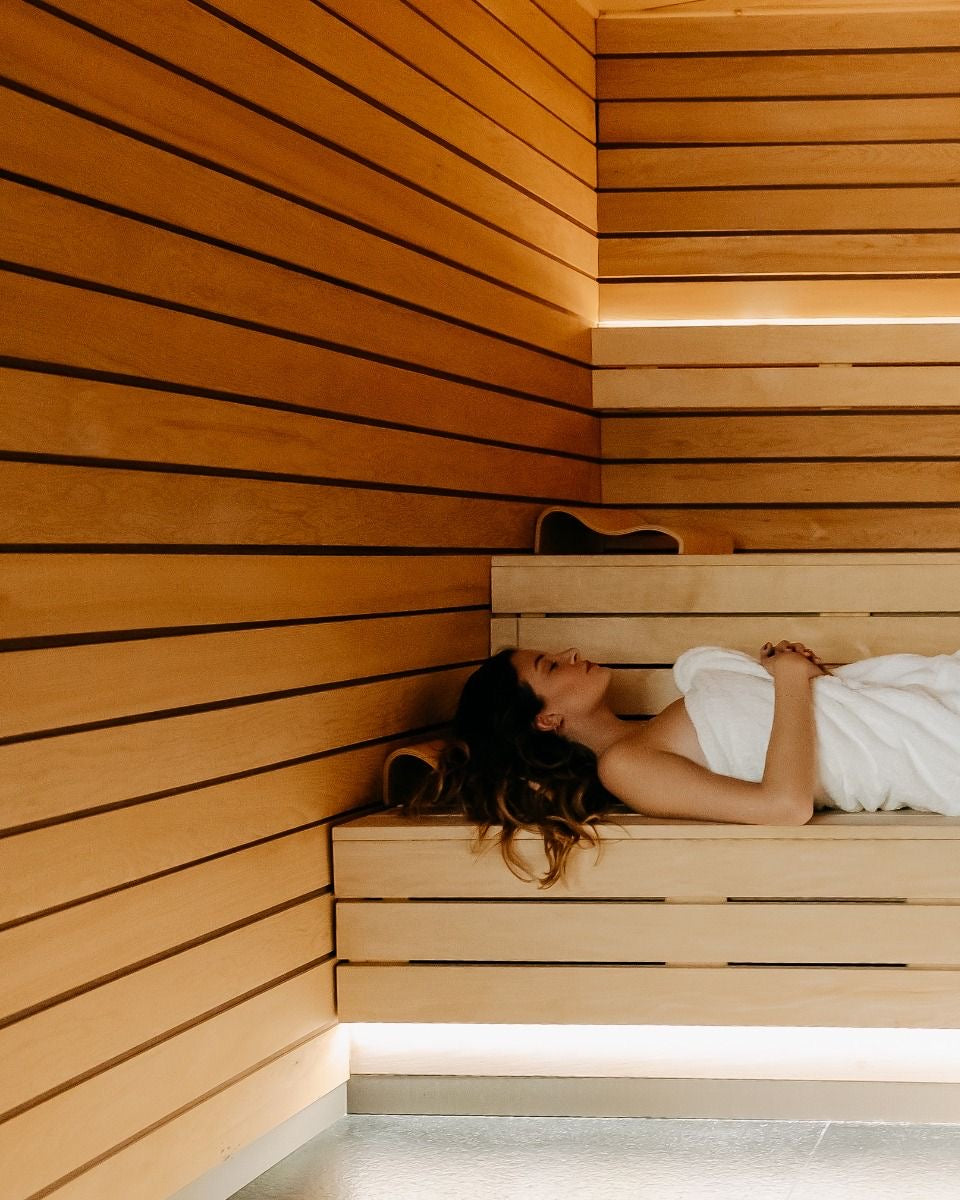Tossing and turning at night? It might be time to swap your bedtime scroll for a Sauna/Infrared Sauna session. Short answer: Yes, Infrared Sauna can help you sleep better—by relaxing muscles, calming your mind, and easing stress. Read on to explore Home Sauna, Garden Sauna, and Outdoor Sauna options!

Understanding Infrared Saunas and Their Unique Approach
What is an Infrared Sauna?
An infrared sauna uses infrared panels to emit radiant heat, which your body absorbs directly.
This differs from traditional saunas that heat the air first.
The result is a gentler, more targeted warmth that reaches deeper into tissues.
Infrared saunas are available for indoor or outdoor setups.
You’ll find everything from sleek home sauna pods to rustic garden sauna retreats.
Infrared vs. Traditional Saunas: Key Differences
-
Infrared saunas heat your body directly using infrared light.
-
Traditional saunas heat the air around you, then your body.
-
Infrared heat is more efficient and comfortable at lower temperatures.
-
You sweat more deeply in infrared saunas despite the gentler warmth.
How Infrared Heat Works (Deep Penetration and Gentle Warmth)
Infrared light penetrates skin and muscles up to 5cm deep.
This deep heat relaxes tissues, improves blood flow, and promotes detoxification.
It feels soothing, not stifling—perfect for pre-bedtime wind-downs.
The Science Behind Infrared Sauna Benefits
Different Types of Infrared (Near, Mid, Far) and Their Effects
-
Near Infrared: Targets skin and boosts cell regeneration.
-
Mid Infrared: Reaches muscles and joints for pain relief.
-
Far Infrared: Penetrates deepest, promoting detox and relaxation.
Most modern infrared saunas use a full spectrum for maximum benefits.
How Infrared Saunas Can Enhance Your Sleep Quality
Promoting Relaxation and Stress Reduction
Lowering Cortisol Levels
High cortisol, the stress hormone, disrupts sleep.
Infrared sauna sessions help reduce cortisol levels, calming your body.
Activating the Parasympathetic Nervous System (Rest-and-Digest)
Gentle heat triggers the parasympathetic nervous system.
This relaxes your body and prepares it for deep sleep.
Boosting Mood and Mental Well-being (Endorphin/Serotonin Release)
Infrared saunas can release feel-good hormones like endorphins and serotonin.
This enhances mood and reduces anxiety—both essential for restful sleep.
Regulating Body Temperature for Optimal Sleep
The "Heat-Then-Cool" Effect and Melatonin Production
Warming up in the sauna followed by a cool-down triggers melatonin release.
Melatonin is the sleep hormone that helps you fall asleep faster.
Aligning with Your Circadian Rhythm
An evening sauna mimics natural temperature drops, syncing your body clock.
This helps reinforce a consistent and healthy sleep cycle.
Alleviating Physical Discomforts That Disrupt Sleep
Reducing Muscle Tension and Pain Relief
Infrared heat soothes aching muscles and eases chronic pain.
Less discomfort means fewer sleep interruptions.
Improving Circulation and Detoxification
Better circulation delivers more oxygen and nutrients to tissues.
It also helps flush out toxins that may otherwise affect your energy and rest.
Addressing Common Sleep Issues
Impact on Insomnia and Sleep Debt
Regular sessions can reduce symptoms of insomnia and help catch up on lost rest.
The calming effects work similarly to meditation or gentle stretching.
Supporting Deep and REM Sleep
Deeper relaxation supports longer periods of restorative deep and REM sleep.
This improves cognitive function, memory, and emotional resilience.
Practical Guide to Using an Infrared Sauna for Better Sleep

When is the Best Time to Use an Infrared Sauna for Sleep?
Evening Sessions: Timing Before Bed
Use your infrared sauna 1–2 hours before bedtime.
This gives your body time to cool down and transition into sleep mode.
How Long Should Your Session Be? (Duration for Sleep Benefits)
Aim for 20–40 minutes, depending on your tolerance and experience.
Shorter sessions still help, especially for beginners.
Maximising Your Infrared Sauna Experience for Sleep
Hydration Strategies
Drink water before and after your session.
Add electrolytes if needed to prevent dehydration.
Creating a Relaxing Pre-Sleep Routine (Post-Sauna Rituals)
-
Take a lukewarm shower.
-
Dim the lights.
-
Try journaling or light reading.
-
Avoid screens and caffeine.
Incorporating Complementary Therapies (e.g., Red Light, Aromatherapy)
-
Add calming essential oils like lavender.
-
Try red light therapy for additional melatonin support.
-
Soft music or meditation apps can further boost relaxation.
Important Considerations and Safety Tips
Who Should Consult a Doctor Before Use?
-
People with heart conditions or low blood pressure.
-
Pregnant women.
-
Those on medications affecting heat sensitivity.
Potential Side Effects and How to Avoid Them
-
Dizziness or light-headedness: hydrate well.
-
Fatigue: start with shorter sessions.
-
Skin sensitivity: adjust temperature settings.
Conclusion
Infrared sauna therapy offers a gentle, effective way to unwind and support restful sleep. From reducing stress to easing aches and syncing your body clock, it covers every angle. Whether you’re using a Home Sauna, Garden Sauna, or Outdoor Sauna, just 20 minutes before bed could be your ticket to dreamland.
Takeaways:
-
Infrared sauna sessions calm the nervous system and reduce cortisol.
-
They help regulate melatonin and body temperature.
-
Improved circulation and pain relief make it easier to sleep deeply.
-
Use 1–2 hours before bed, with proper hydration and relaxation rituals.
-
Ideal for those with insomnia, sleep debt, or stress-related sleep issues.






